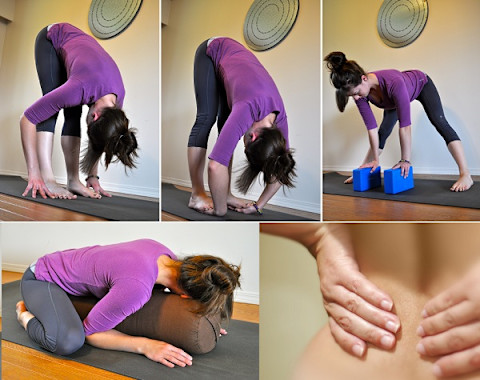People who have sustained a bulged or herniated disc may be afraid to do yoga. A herniated disc is most commonly the result or chronic flexion (forward bending) movements, especially while picking up a heavy load. This can result in chronic low backaches.
Stretching and yoga can assist in recovery, ease low back pain and lengthen tight hamstrings, but overstretching or stretching improperly can often make the situation worse. Private instruction is always the most appropriate and beneficial way to practice if you have a herniated disc, but if you are in a public class or practicing at home, try to avoid the following poses.

1. Balasana without support. Instead, try Balasana with your trunk supported on a bolster or thick blankets.
2. Janu Sirsasana. Instead, stretch the hamstrings with Supta Padangustasana with a strap around your foot. Begin with your knee bent and slowly work towards gently straightening it.
3. Marichyasana I
4. Padangusthasana or Uttanasana with straight legs
6. Upavista Konasana. Instead, try Supta Baddha Konasana (Reclining Cobbler’s or Reclining Goddess in English) with a block or support under each outer thigh, or Prasarita Padottanasana with your hands on the back of a chair or two blocks on the floor.
7. Any pose where your back is rounded.
8. Any pose that causes numbness, shooting pain, or tingling.
